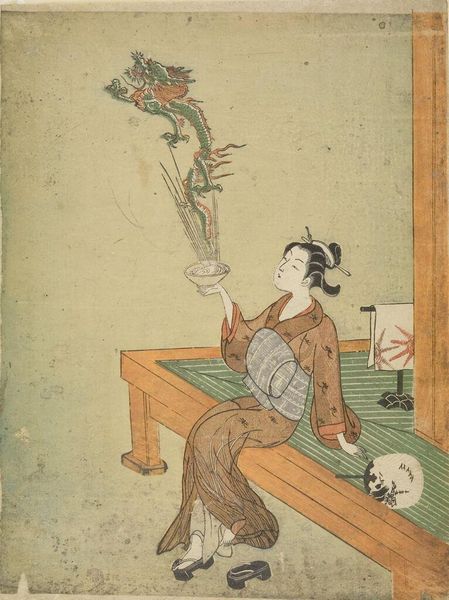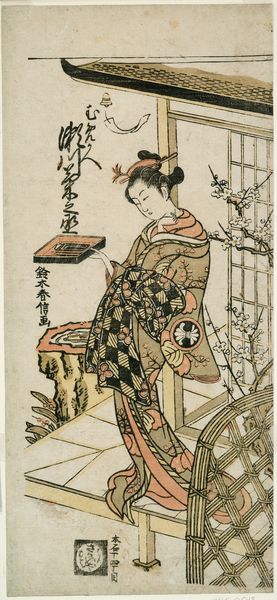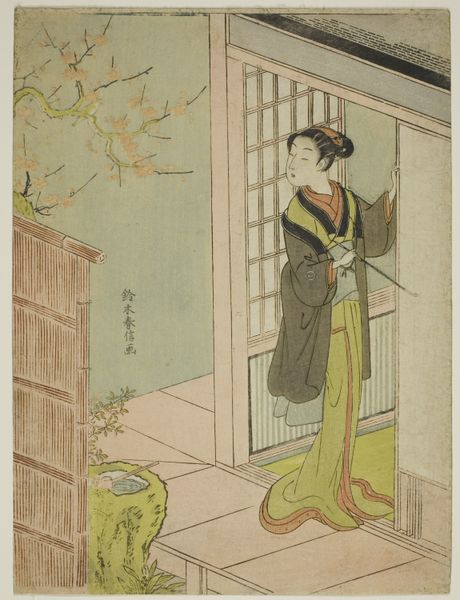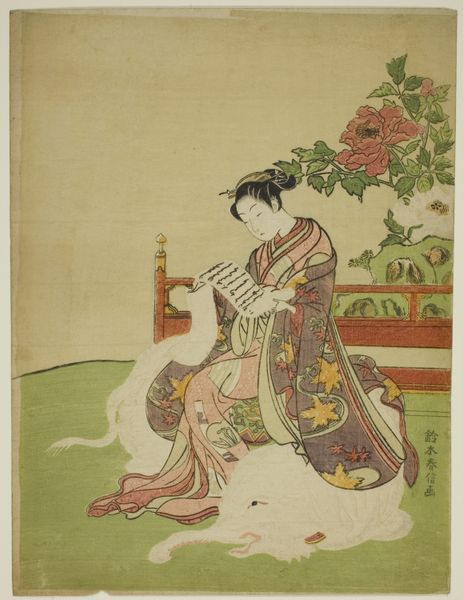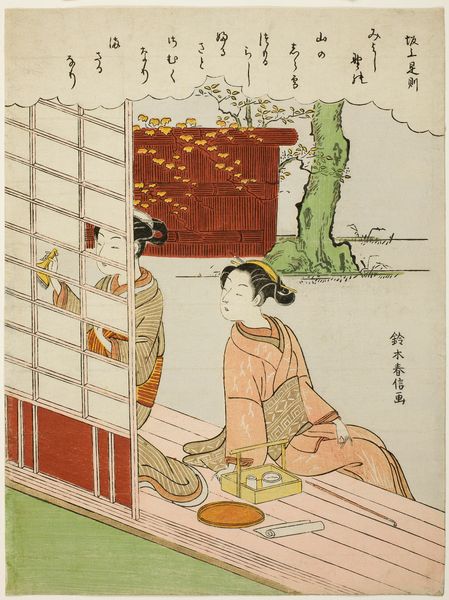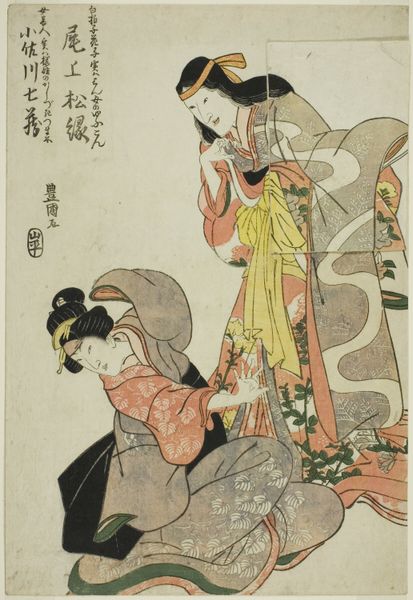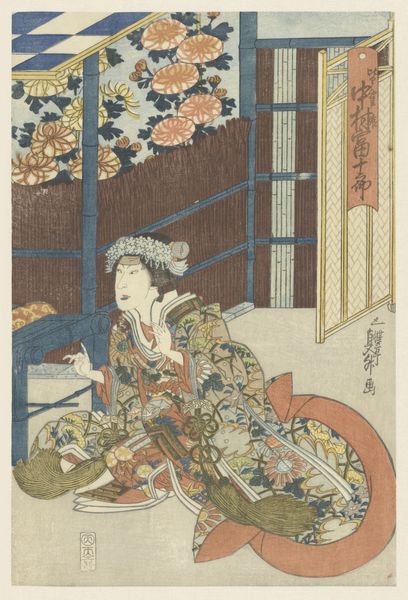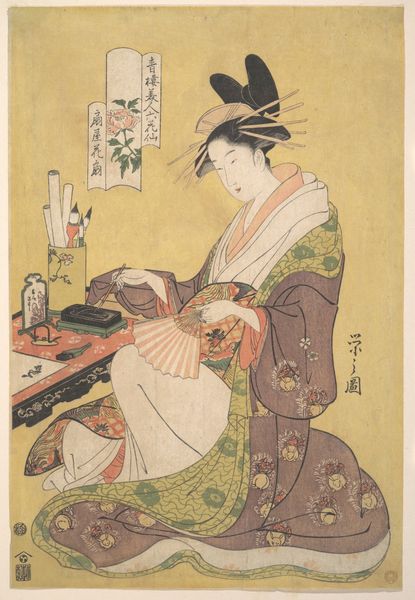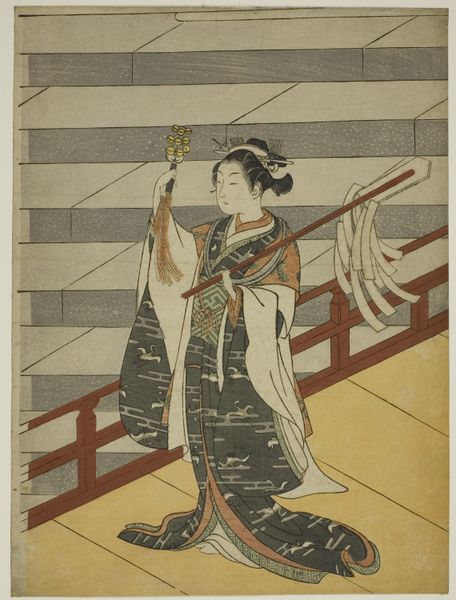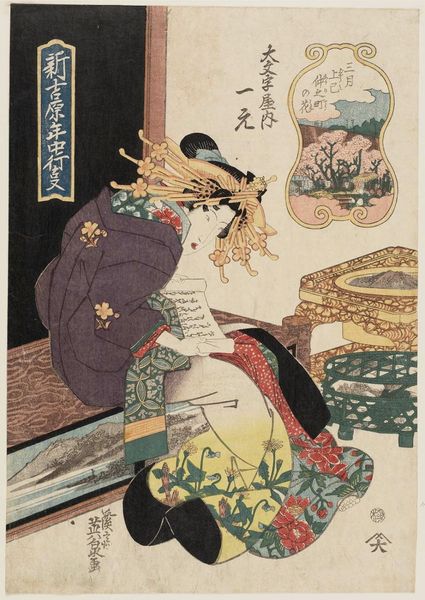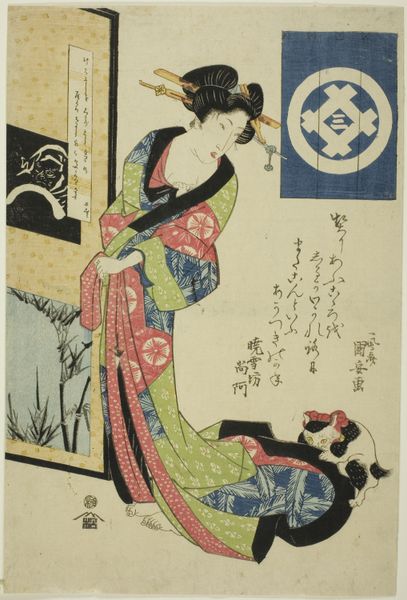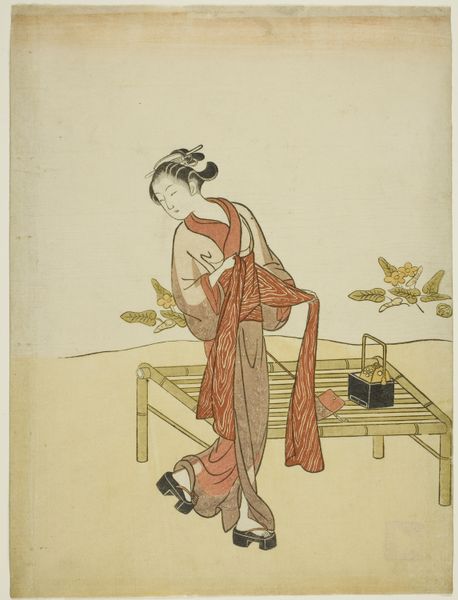
Woman Likened to Chinese Hermit Handling Dragon 1765
0:00
0:00
print, ink, woodblock-print
#
portrait
# print
#
asian-art
#
ukiyo-e
#
japan
#
figuration
#
ink
#
coloured pencil
#
woodblock-print
Dimensions: 10 1/2 × 7 1/2 in. (26.7 × 19.1 cm) (image, sheet, vertical chūban)
Copyright: Public Domain
Curator: Suzuki Harunobu’s woodblock print, “Woman Likened to Chinese Hermit Handling Dragon,” created around 1765, really captivates with its blend of earthly and fantastical elements. What are your initial thoughts? Editor: My first impression is one of delicate serenity, punctuated by a vibrant, almost cartoonish, dragon hovering above. There's a whimsical contrast between the refined figure and the lively mythical beast. Curator: That contrast highlights an interesting point about ukiyo-e prints of this period: they served both elite and common tastes, a commodity. Harunobu’s series of mitate-e prints draws heavily from classical literature and blends popular themes of beauty, and the printmaking process was itself increasingly collaborative and market-driven. Editor: And what a collaborative process it must have been, transforming an image from painting or drawing into carefully carved blocks of wood, each meticulously inked! Do you think the relatively accessible medium made this imagery of elite culture, this “woman likened to a hermit,” more palatable, more easily consumed? Curator: Precisely! Prints like these allowed the urban population to engage with the ideals of feminine beauty associated with the upper classes, but the addition of the dragon is what transforms the familiar theme. Consider the raw materials: the types of wood used for the blocks, the inks sourced from specific regions, and the paper’s absorbency influencing the final print. Editor: True, the paper stock in this image looks almost fragile. Looking closely, you can almost feel the different pressures from the printing process. Tell me, how does the cultural understanding of dragons factor into this specific work and time period? Curator: Dragons held multifaceted significance in Edo-period Japan, representing everything from benevolent deities to symbols of imperial power. Here, its connection to a female figure subverts these traditions. These "likened-to" images playfully challenged social norms, reflecting, and perhaps gently mocking, societal roles. Editor: So this dragon’s flight becomes a symbol not just of power, but of a new potential—the woman's agency, cleverly marketed within acceptable social boundaries of the time. It’s remarkable to consider the social commentary folded into what appears, on the surface, a simply charming image. Curator: Agreed. By analyzing both the means of production and the artistic traditions, we understand its profound societal impact at that time. Editor: It gives a deeper sense of how printmaking's collaborative process itself helped democratize not just image creation, but cultural commentary, as well.
Comments
No comments
Be the first to comment and join the conversation on the ultimate creative platform.
